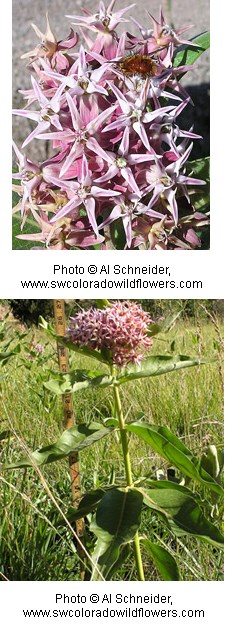
Asclepias speciosa Family: Asclepiadaceae - Milkweed Family Asclepias is the only genus from this family represented at Arches National Park. Perennial herbs usually with milky latex; stems 2' to 3.3' (6 to 10 dm) tall Leaves: opposite; simple; hairy; 2.4” to 9.2” (6 to 23 cm) long, 1.2” to 5.6” (3 to 14 cm) wide Flowers: flowers in clusters; bisexual; 5 united purplish-rose petals which or lobed or cleft and folded downward; 5 parted or lobed sepals folded downward; 5 stamens; 2 pistils; plus a corona (an additional structure sitting between the petals and the stamens that looks like an extra set of petals). The corona consists of 5 hoods; inside the hoods there may be a beak-like structure (horn) pointing toward the center of the flower. The petal lobes are 0.4” to 0.6” (10 to 15 mm) long Pollinators: insects (specifically bees, moths and butterflies); self-fertile Fruits: pair of follicles; seeds typically have very silky hairs Blooms in Arches National Park: May, June Habitat in Arches National Park: weed in disturbed areas and riparian areas Location seen: park road south of Salt Valley overlook around mile 10 to11, outside Arches National Park in Mill Creek Other: The genus name, “Asclepias”, refers to “Asklepios”, a Greek physician and an authority on the medicinal use of plants and who according to Greek Myth could bring the dead to life. Hades fearing a loss of employment, convinced his brother Zeus to kill Asklepios with a bolt of lightning. The species name, “speciosa”, means “showy”. Several species of Asclepias are poisonous to humans and livestock. |
Last updated: April 29, 2025
